How to install Qmmp on Debian 10
If you're looking for something that works well in Linux just like Winamp in Windows, Qmmp is a great option. Qmmp is a feature-rich audio player with support for multiple formats. It is written in Qt and C ++, providing you an interface similar to Winamp. In this article, TipsMake.com will introduce two ways to install / uninstall Qmmp on Debian.
Install Qmmp through Debian Software Manager
Install Qmmp
For a person who doesn't want to use the command line a lot, installing the software included in the official Debian archive through the UI is simple. On the Activities toolbar of the Debian desktop (accessible via the Super / Windows key), click the Debian Software Manager icon.
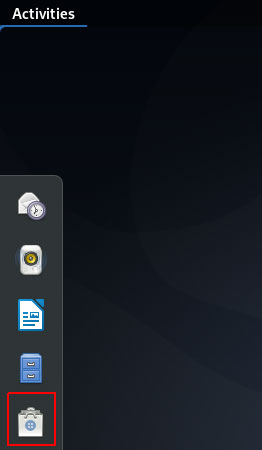
In the following view, click the search icon and type qmmp in the search bar. The search results will display Qmmp as follows:

This package is maintained by the main, stable Debian archive.
From Software Manager , click on the Qmmp section:
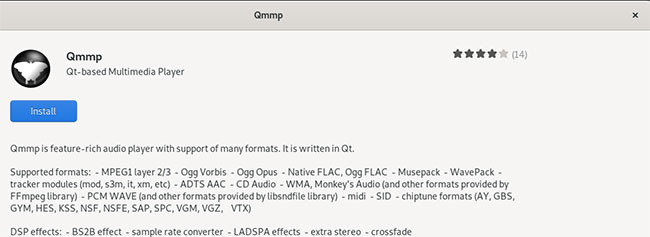
Click the Install button to begin the installation process. The following dialog box is displayed so that you provide authentication details, as only authorized users can install software on Debian.
Enter the password and click the Authenticate button. After that, the installation process will begin, displaying a progress bar as follows.
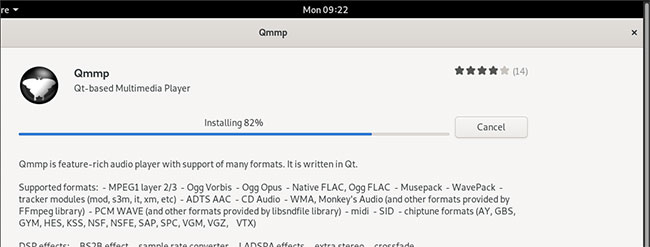
Qmmp will then be installed on the system and you will receive the following message after a successful installation:
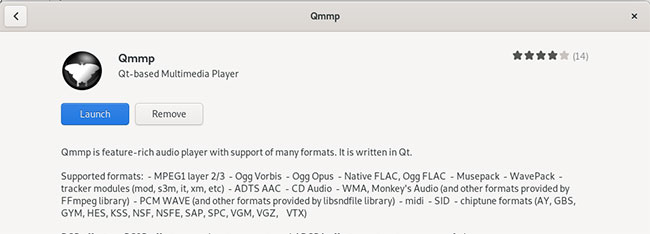
Through the dialog above, you can choose to launch Qmmp directly and even remove it immediately for any reason.
Delete Qmmp
If you want to delete Qmmp installed by the above method, you can do the following:
Open Debian Software Manager and search for Qmmp. You will see the status of 'Installed' in the search section. Click this item and then select Remove.
After that, the system will prompt you to confirm with the authentication dialog. The software will be deleted when you provide the password to the sudo user and click Authenticate on the dialog box.
Install Qmmp with the command line
First, please open the Terminal through the Application Launcher Search bar as follows:
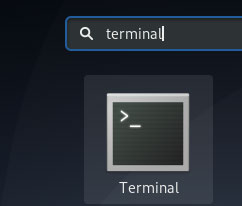
The next step is to update the system repository index through the following command:
$ sudo apt-get update This helps you install the latest version of a software from the Internet.
Please note that only authorized users can add, delete and configure software on Debian.
Next, run the following command to install Qmmp:
$ sudo apt-get install qmmp The system may prompt you with Y / N option to continue the installation. Please enter Y if you want to continue with the installation. This process may take a while, depending on your Internet speed, after which Qmmp will be installed on the system.
The following command will allow you to check the version number of the installed package and also ensure that the software is actually installed on the system.
$ qmmp --version Delete Qmmp
You can use the following command in Terminal to uninstall Qmmp from the system:
$ sudo apt-get remove qmmp Enter Y in the Y / N prompt and the software will be completely removed from the system.
Launch Qmmp
You can access Qmmp from the Debian Application Launcher as follows or directly from the application list:
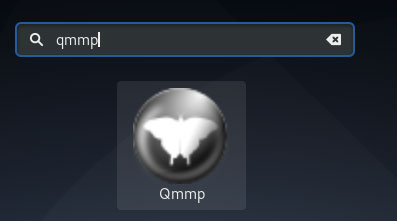
Alternatively, you can use the following command in Terminal to launch Qmmp via the command line.
$ qmmp You already have a good music player, like Winamp in MS Windows.
You should read it
- How to Install Wireshark on Debian 11
- How to install Arduino IDE on Debian 10
- How to Install Debian
- How to Install Software in Debian Linux
- How to install and use PHP Composer on Debian 11
- Configure mouse settings on the Debian system
- How to Install and Use Ansible on Debian 10
- How to set the JAVA_HOME path in Debian 10
May be interested
- How to install NVM on Debian
 nvm stands for node version manager. with nvm, you can manage multiple node.js instances of nodejs and switch between them without uninstalling and reinstalling the node.
nvm stands for node version manager. with nvm, you can manage multiple node.js instances of nodejs and switch between them without uninstalling and reinstalling the node. - Notable changes and additions in Debian 11 'Bullseye'
 debian is one of the oldest, most stable and flexible linux distributions in the free and open source world.
debian is one of the oldest, most stable and flexible linux distributions in the free and open source world. - Do not destroy the Debian system!
 debian is a powerful and reliable system, but new users are still very easy to ruin the system, by not doing everything the way debian does.
debian is a powerful and reliable system, but new users are still very easy to ruin the system, by not doing everything the way debian does. - Debian 10 Buster, New features in Debian 10 Buster
 debian 10 buster has been released. let's explore the new features in debian 10 buster through the following article!
debian 10 buster has been released. let's explore the new features in debian 10 buster through the following article! - How to Restart Debian Using the Command Line
 the linux operating system can run without a reboot not only for a few weeks but for years. but sometimes there's a good reason to reboot your linux system after a week or two, depending on the situation.
the linux operating system can run without a reboot not only for a few weeks but for years. but sometimes there's a good reason to reboot your linux system after a week or two, depending on the situation. - 9 best Debian-based Linux distributions
 fortunately, debian's flexibility has made it a good base for other distributions, providing a more pleasant experience for those new to linux.
fortunately, debian's flexibility has made it a good base for other distributions, providing a more pleasant experience for those new to linux. - Configure mouse settings on the Debian system
 debian allows you to create as many configurations as possible in the system modules. in this article, tipsmake.com will describe how to configure mouse settings on a debian system.
debian allows you to create as many configurations as possible in the system modules. in this article, tipsmake.com will describe how to configure mouse settings on a debian system. - How to install and configure Samba on Debian
 samba is a powerful open source tool that allows windows-like file and printer sharing on the network in linux systems.
samba is a powerful open source tool that allows windows-like file and printer sharing on the network in linux systems. - How to reset the password for sudo in Debian
 the user password is changed in debian using the passwd command. in this article, tipsmake.com will explain how root users can change their own passwords on debian servers.
the user password is changed in debian using the passwd command. in this article, tipsmake.com will explain how root users can change their own passwords on debian servers. - How to upgrade from Debian 11 'Bullseye' to Debian 12 'Bookworm'
 if you are already using debian 11 bullseye, you can directly upgrade to debian 12 bookworm from the terminal.
if you are already using debian 11 bullseye, you can directly upgrade to debian 12 bookworm from the terminal.










 What is the difference between Ubuntu Desktop and Ubuntu Server?
What is the difference between Ubuntu Desktop and Ubuntu Server? Learn about Hibernate mode in Linux
Learn about Hibernate mode in Linux How to add wallpapers to the Debian 10 terminal
How to add wallpapers to the Debian 10 terminal What is the difference between Rolling Release and Point Release releases?
What is the difference between Rolling Release and Point Release releases? How to execute .run or .bin packages in Linux
How to execute .run or .bin packages in Linux How to use Sticky Bit to manage files on shared folders in Linux
How to use Sticky Bit to manage files on shared folders in Linux